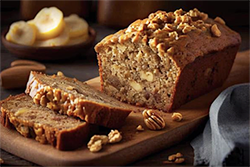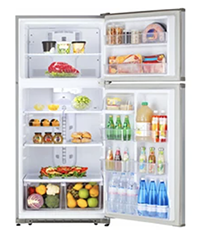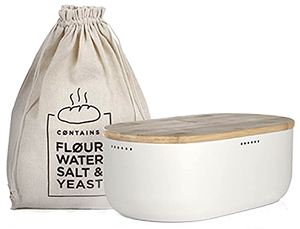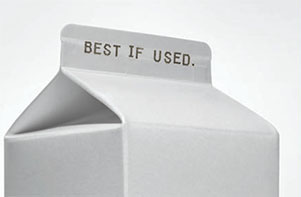 SAVE MONEY. SAVE FOOD. SAVE EARTH.
SAVE MONEY. SAVE FOOD. SAVE EARTH.
This page contains affiliate links which support SalvageFood.org, a 501(c)(3) nonprofit, if you make a purchase.
Save Money. Save Food. Save Earth.
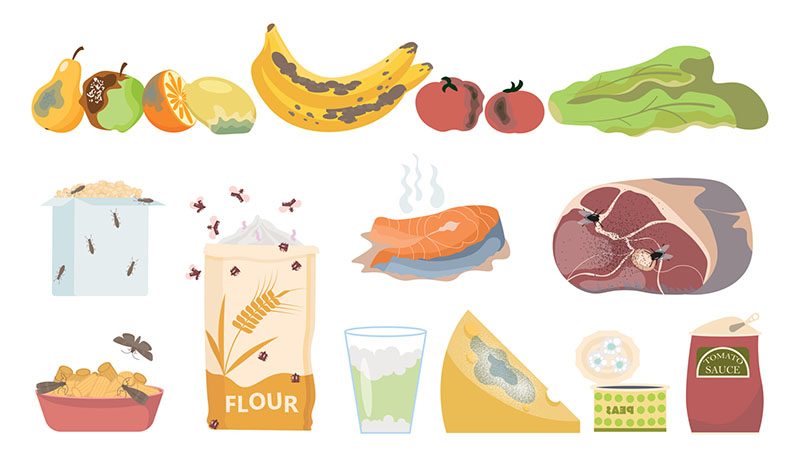
The 10 Most Thrown Away Foods
and How to Save Them
A recent survey conducted by OnePoll on behalf of HelloFresh found that the average American spends nearly $3,000 a year on unused groceries — that equates to about $60 per week spent on wasted food.
The main reason for food being thrown away, according to 70% of people who took the survey, was that the food spoiled before they were able to use it. Another 38% of those surveyed said that they’ve thrown food away just because they didn’t feel like eating it after purchase, and 25% said they have tossed food after a meal because they weren't interested in keeping leftovers.
About 25% of the 2,000 survey respondents said that, when they cook, they "always" or "often" make more food than they’re able to finish, usually with the intention of having leftovers. Unfortunately, slightly more than a third of these people admitted that they were likely to forget about those leftovers once they were out of sight, and forgetting about food is one of the primary reasons it gets wasted.
The survey participants were asked which foods they believed were the most difficult to use up before they spoiled and had to be thrown away. The results appear in the chart below, along with suggestions on how to store each item properly and recipe ideas for how to use the item before spoiling.
Recipes to Help Save FoodThink that sour milk or mushy bananas are no good? Food that's a little past its prime can be transformed into something delicious — like breads, pancakes, or shortcake. Find recipes for everything from overripe avocados to cheese rinds at savethefood.com/recipes.
The food storage times shown in the chart below are general guidelines only. Foods can spoil sooner than shown in the chart below, especially if they haven't been stored properly. The best way to tell whether a food has spoiled is to trust your senses of sight, smell and taste. Spoiled foods will usually look different in texture and color, smell unpleasant, and taste bad when they become unsafe to eat. Use common sense and do not consume foods that are moldy or otherwise look, smell or taste bad.
1Lettuce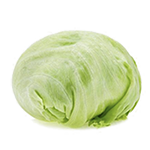
How to Store:Remove any damaged or wilted outer leaves. Wrap in a dish towel or paper towels to absorb any excess moisture during storage, and place in the crisper drawer of the fridge.Extend the life of your lettuce and other veggies by up to 2 weeks with organic cotton veggie bags from Vejibag.
How Long Can it be Stored:1 to 2 weeks.
Recipe Ideas from SuperCook App:Avocado Egg Salad Wraps | Egg, Onion & Lettuce Wraps
2Bananas
How to Store:Keep bananas cool and protected from light. Storing bananas in the refrigerator will slow or stop the ripening process, preserving the fruit at its current state (don't put green bananas in the fridge since this will prevent them from ripening). Store away from other fruit that might release ethylene gas such as avocados, tomatoes, peaches, and apples. Wrapping the crown in plastic wrap or a Green Bag by Debbie Meyer will control the release of ethylene and can extend the life of the bananas.
How Long Can it be Stored:1 to 2 weeks.
Recipe Ideas from SuperCook App:Banana Bread | Banana Ice Cream
Refrigerator Storage TipStudies show that foods which are out of sight are often forgotten, so place food items that should be used sooner in the front and on the highest shelves.
3Milk
How to Store:Store milk on refrigerator shelves rather than in the refrigerator doors (which tend to be warmer). To extend the life of the milk, take it out of the fridge for only as long as you need it, and put back as quickly as possible. Buy milk and other dairy products at the end of your shopping trip and keep it, along with other dairy products and frozen food, in the same bag to help them stay cold while you transport to your home.
How Long Can it be Stored:1 week.
Recipe Ideas from SuperCook App:Strawberry Milk | Sweetened Condensed Milk
4Apples
How to Store:Wrap whole apples individually in a damp paper towel, place in a plastic bag with holes and store in the refrigerator.
How Long Can it be Stored:4 to 6 weeks.
Recipe Ideas from SuperCook App:Apple and Oat Cookies | Apple Crisp
5BreadCommercial bread loaves, flat breads, rolls and buns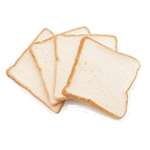
How to Store:Store in a plastic or reusable bread bag sealed loosely and kept at room temperature in a dark, cool section of your kitchen counter or pantry or in a bread box (can be kept in the same plastic bag in which it was purchased).Bread should be stored in the refrigerator if it won't be used in about 5 days and placed in the freezer if it won't be used within about 14 days.How Long Can it be Stored:14 to 18 days unfrozen. 3 to 5 months if frozen.
Recipe Ideas from SuperCook App:Bread Pudding | Homemade Croutons
BreadHomemade or artisan (unsliced)
How to Store:For optimum results, homemade breads or bakery artisan breads (which don't have preservatives) should be placed into a linen bread bag and stored in a bread box. The bread box should be located away from any heat sources.Slice and store in the freezer if it won't be used within about 4 days.
How Long Can it be Stored:3 to 5 days unfrozen. 3 to 5 months if frozen.
6Avocados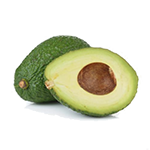
How to Store:Unripe avocados should be kept at room temperature on your kitchen countertop. Ripened, whole avocados should be stored in the refrigerator in an airtight food storage container or in the produce/crisper drawer to prevent further ripening. After an avocado is cut, whatever is leftover should be stored in the refrigerator (place plastic wrap directly on the flesh of cut avocados to prevent air getting to it). Leave the seed intact when storing to protect the covered portion of avocado from turning brown.
How Long Can it be Stored:1 to 4 days.
Recipe Ideas from SuperCook App:Avocado Stuffed Potatoes | Tangy Lime Avocado Crema
7Deli Meats
How to Store:Store in an airtight container in the refrigerator. Storing in a vacuum sealed container will extend freshness.
How Long Can it be Stored:"Best by" date plus 3 to 5 days if vacuum sealed and unopened. 3 to 5 days if freshly sliced or opened. 1 to 2 months if frozen (3 months for cured meats such as pepperoni and salami).
Deli Cheese
How to Store:Wrap in wax paper or Formaticum cheese paper and store in an airtight container in the refrigerator. Vacuum sealing or storing in a vacuum sealed container will extend freshness.
How Long Can it be Stored:"Best by" date plus 2 to 3 weeks if vacuum sealed and unopened. 5 to 7 days if freshly sliced or opened. 1 to 3 months if vacuum sealed and refrigerated. Hard cheeses last longer than soft cheeses.
8Eggs
How to Store:Store eggs in their original carton on an inside shelf of your refrigerator. Make sure the eggs are round side up and keep the carton closed. It's best not to store eggs on the refrigerator door.See instructions on how to freeze eggs at The Spruce Eats.
How Long Can it be Stored:3 to 5 weeks.
Recipe Ideas from SuperCook App:Spinach & Feta Quiche | Zucchini Frittata
9Meat
10Carrots
How to Store:Wrap unpeeled, unwashed carrots in a dry paper towel, and store them in an airtight food storage container or bag. Cut off any green tops from the crown as soon as they are brought home and before refrigerating. Store in the coolest part of your refrigerator.Extend the life of your lettuce and other veggies by up to 2 weeks with organic cotton veggie bags from Vejibag.
How Long Can it be Stored:2 to 3 weeks. Baby carrots can be stored for 4 weeks.
Recipe Ideas from SuperCook App:Carrot Cake Muffins | Glazed Carrots
Use Code BSF10X3 for $10 OFF your first 3 orders of $35 or more

